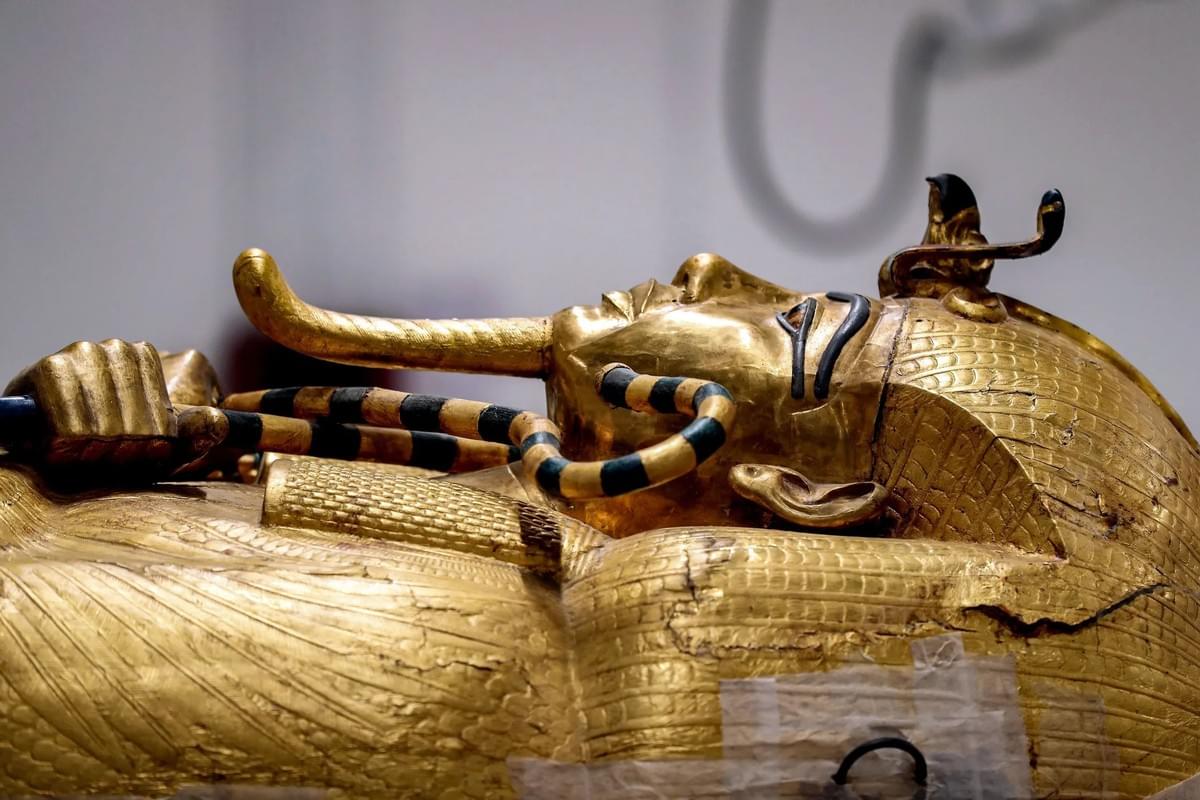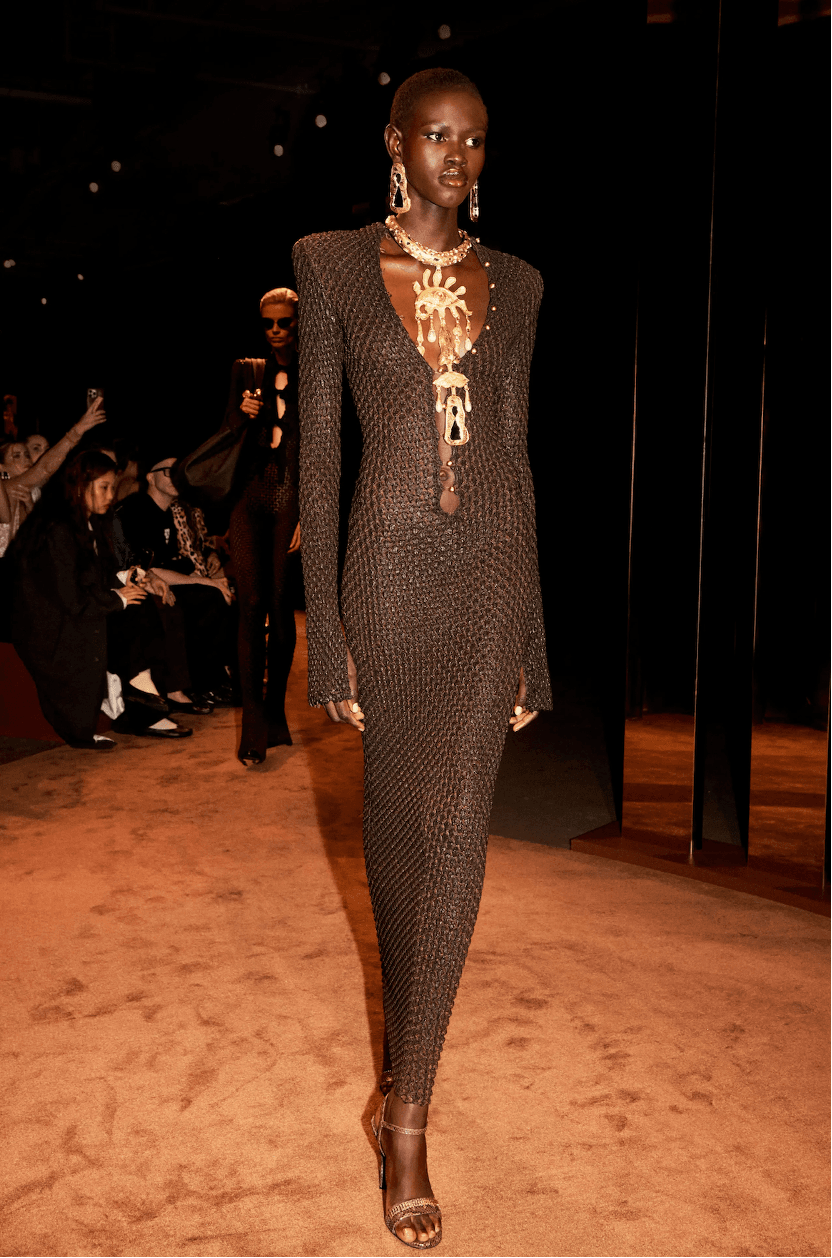
Deep in the valley of the kings, a boy’s curiosity led him to a weathered stone, unaware it was the hidden seal guarding a secret staircase carved into the ancient bedrock below. This chance discovery on 2 November 1922 sent shockwaves across the globe and was destined to change the very landscape of aesthetic design forever. When British archaeologist Howard Carter, with the vital yet often uncredited support of a local Egyptian team, unveiled the tomb of Tutankhamun, the event turned into a global media sensation. What began as an archaeological breakthrough soon
ignited a creative revolution that reshaped decorative design forever. Within months, Egyptian motifs were emblazoned on jewellery, perfume bottles and building facades across the Western world.
The complete collection of artefacts from Tutankhamun’s tomb will be on display at the Grand Egyptian Museum, which was recently established near the Pyramids of Giza. Once it fully opens up later this year, it will be the world’s largest museum dedicated to a single civilisation, housing more than 100,000 pieces that showcase over 3,000 years of Ancient Egyptian heritage. “Having the Grand Egyptian Museum is essential not only for safeguarding our history but for making it accessible to future generations, right here on our own land,” believes Jude Benhalim, creative director of her eponymous Cairo-based jewellery brand that preserves culturally rooted jewellery-making techniques.
“It’s about ensuring that Egypt owns and tells its own story with pride and clarity, while inspiring the world.”
JUDE BENHALIM
Over the ages, jewellery has been a paramount category of the treasures excavated from ancient Egyptian sites. The discovery of Tutankhamun’s tomb coincided with the peak of the Art Deco movement, and motifs extracted from the Valley of the Kings quickly became code for modernity, mystery and luxury. Maison Cartier’s fascination with Ancient Egypt took root long before the world was dazzled by the discovery of the ancient tomb. As early as the 1870s, Louis-François Cartier was crafting exquisite jewellery inspired by Egyptian motifs. But it was the treasures found in the boy king’s tomb that propelled Egyptomania into full-fledged hysteria. Sensing he pulse of the moment, Cartier responded immediately. Between 1922 and 1925, the Maison produced approximately 150 Egyptian revival pieces, with actual Ancient Egyptian artefacts, scarabs and amulets often embedded in them and reworked into brooches, bracelets and vanity cases.
Riding the wave of Egyptian revival, Tiffany & Co also brought a distinctive vision to the trend. Renowned for their pioneering use of Favrile glass, they crafted iridescent “beetles” whose opalescent sheen captured the shifting colours of ancient treasures. These luminous elements found new life as striking centrepieces in bracelets and pendants, paired with lustrous gemstones and intricately designed gold beads. “The Egyptians marvelled at the dung beetle rolling a ball that contained its eggs, from which new life would emerge. They likened this to the sun, viewing the scarab as the force that pushes it across the sky each day,” explains Dr Yasmin El Shazly, deputy director for research and programmes at the American Research Centre in Egypt. Even colours were selected carefully, with each hue holding symbolic significance. “Blue represented the sky, water and creation, while green symbolised regeneration,” says El Zhazly. Gold, she notes, was considered the flesh of the gods, its incorruptible nature embodying eternity itself. “That’s why the mask of Tutankhamun is made of gold: wearing it, he becomes divine. Gold does not tarnish; it is everlasting, which is precisely why it remains a treasured material in jewellery today.”

Photo: Bvlgari
Egyptomania has proven to be no fleeting trend – age-old motifs from the nation have continued to resurface in haute joaillerie collections through the decades. “There’s a rare authenticity and emotional depth in our symbols, which carry stories of identity, resilience and beauty,” reflects Benhalim. “That’s why global brands, from Cartier to Bvlgari, are drawn to Egyptian heritage – it’s not just aesthetic, it’s soulful, meaningful and enduring.” Launched in the 1940s, the original Bvlgari Serpenti collection drew inspiration from the ancient Egyptian fascination with the serpent, a potent symbol of wisdom, eternity and protection. The Roman jewellery house reimagined the coiled serpent as a modern adornment, crafting flexible Tubogas bracelets and watches that elegantly wrapped around the wrist through hypnotic, sinuous movements. Vivid enamel scales and gleaming gold paid homage to Egypt’s jewelled past, while establishing Serpenti as an icon of bold sophistication that’s enduring till date.
For autumn/winter 2023, Rick Owens’s Luxor collection channelled Ancient Egypt most strikingly through its jewellery, presenting each accessory as a modern relic. From imposing metal cuffs to sculptural chokers and bold rings, the pieces embodied the ceremonial power of pharaonic adornment, crafted with an architectural precision and heavy, elemental materials. In these statement pieces, Owens distilled the spiritual gravity of Luxor’s ancient ornaments and refashioned them for his audience, conjuring a sense of timelessness and enduring presence amid contemporary chaos.
More recently, Messika’s Beyond the Light collection offers a thoughtful interpretation of Egyptian heritage, featuring strong geometric shapes, gold settings and innovative usages of diamonds that reference architecture and iconography without resorting to pastiche. Centrepieces like the Akh-Ba-Ka necklace reinterpret sacred motifs with a sleek, architectural sensibility, balancing reverence for Egypt’s past with the brand’s minimalist and avant-garde approach.

Photo: Schiaparelli autumn/winter 2025
Schiaparelli’s latest ready-to-wear winter accessories also channel Egyptian influence through a bold lens. Monumental gold necklaces and form-driven wristwear from the 2025/2026 collection command attention, their exaggerated proportions echoing the grandeur of pharaonic regalia. Eye motifs, an unmistakable nod to the potent symbolism of the Eye of Horus, embody mysticism and a protective aura. Perhaps most compelling are the reptilian rings and gold collars, with an interplay of light and shadow that conjures the Nile’s legendary fauna. Schiaparelli reinterprets these ancient codes with fearless opulence, turning history into high-art jewellery that feels at once iconic and startlingly new.
